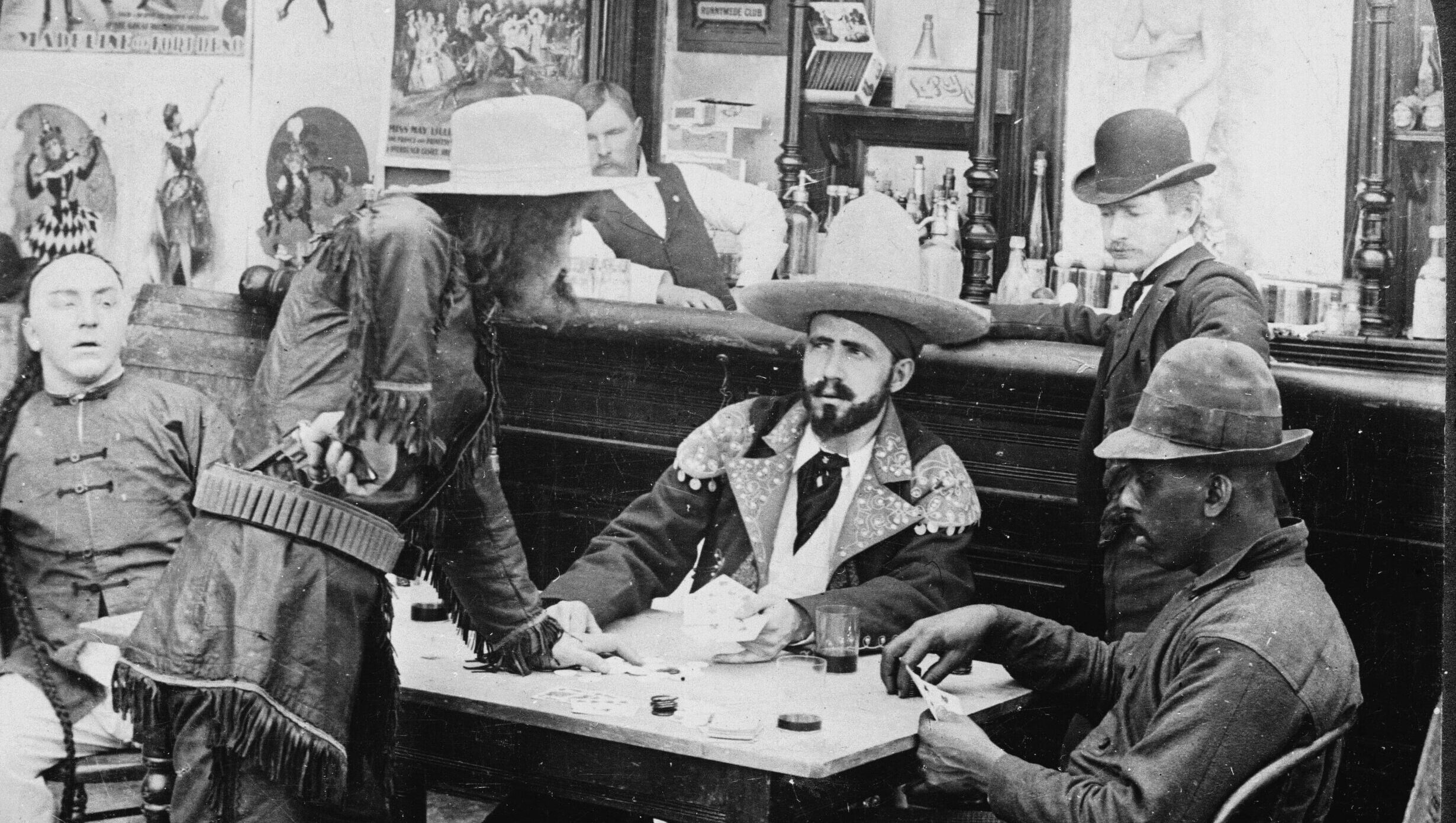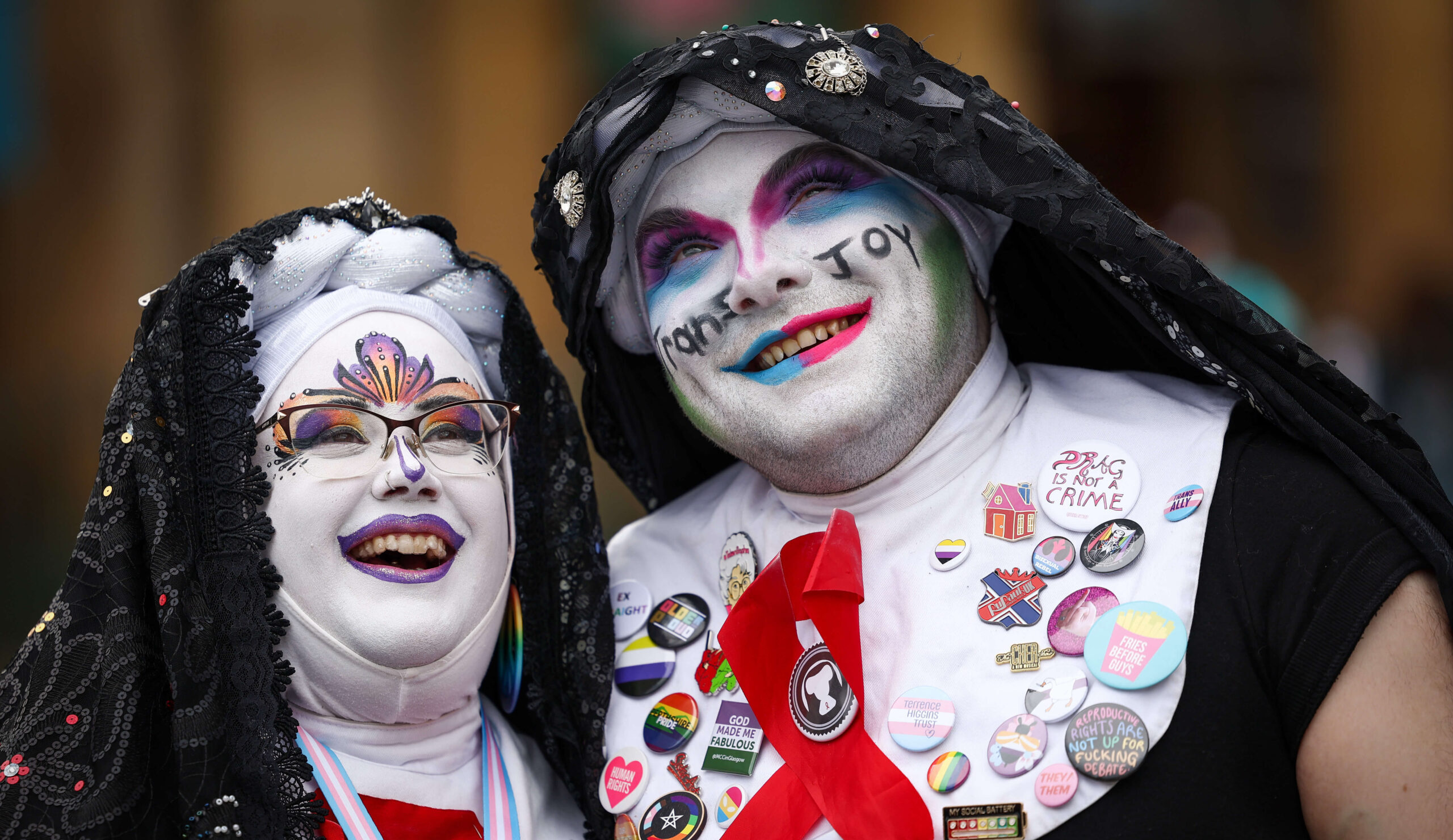God-Fearing and Free: A Spiritual History of America’s Cold War
by Jason W. Stevens
(Cambridge, MA: Harvard University Press, 2010)
Henry P. Van Dusen’s 1951 book, God in Education: A Tract for the Times, sits inactively on the shelves of many libraries across the United States where it has not been deaccessioned altogether. It is no longer interesting to many patrons. When Scribner’s published the book by Union Theological Seminary’s president—the man who was technically Reinhold Niebuhr’s boss—the publisher must have thought that the author’s theological content would supply timeless truths necessary to draw readers beyond Van Dusen’s era. The author feared the effects of secularism on American higher education, which were simply a symptom of the nation’s spiritual decline. So pronounced was the United States’ plight that Van Dusen had no trouble finding political and military leaders to second his concern. In his foreword, Van Dusen quoted General Douglas MacArthur, who asserted that the West was facing a malaise that was “basically theological.” Van Dusen also cited John Foster Dulles, former senator from New York and soon to be secretary of state, who argued that America needed to recover its religious roots for an adequate public morality.
Readers unfamiliar with the workings of American Presbyterianism would not have noticed the lengthy ties between Van Dusen and Dulles. The connection between these prominent figures in America’s Protestant establishment went back at least to 1922, when Van Dusen refused to affirm the virgin birth of Christ during ordination exams in the northern Presbyterian Church, a refusal that nurtured fundamentalists’ suspicions. Dulles, then a prominent New York attorney and active layman in the church, provided legal counsel to Van Dusen during formal church proceedings. Dulles had also risen to defend the most prominent of New York’s modernists, Harry Emerson Fosdick. Also lost on readers ignorant of the ties between Van Dusen and Dulles was the irony of liberal Protestants on the theological left during the 1920s winding up on the cultural and political right three decades later. Part of Protestant liberalism’s point in the 1920s had been to recognize that divine revelation was not the only source of truth and moral guidance: that science, history, and human consciousness also illuminated human existence. But by the 1950s, liberals like Van Dusen, with the assistance of Dulles, were arguing for a return to divine truth to remedy America’s woes. They had seen, presumably, where human experience could go without divine assistance.
Van Dusen goes unmentioned in Jason W. Stevens’s spiritual history of the Cold War, God-Fearing and Free, but if he had cited the Union president, he would have had no trouble detecting the irony of Van Dusen’s apparent reversal. Stevens’s subject is the religious turn that took place in American culture at the same time as the postwar revival. In the nation’s movies and novels, in the discourse of public intellectuals—and not simply among America’s Protestant preachers and theologians—writers, professors, and foreign policy analysts resorted to theological tropes to explain the United States’ new responsibilities as a superpower engaged in a Cold War with Soviet communism.
The doctrine that American intellectuals found most congenial was original sin. As Stevens portrays the period from the late 1940s to the mid-1960s, the United States renounced its earlier ideals of innocence in favor of original sin. This dose of realism provided ballast for the hard work of combating communism. Of course, the nation’s leading catechist in this doctrine was one of Van Dusen’s professors, Reinhold Niebuhr. The recent widespread invocation of Niebuhr during America’s war in Iraq and its related conflict with terrorism has demonstrated how useful the Union professor’s arguments can be for conducting the dirty work of modern warfare. His realism assists the prosecution of war without falling into the errors of self-righteous idealism or innocent pacifism.
Stevens’s account is less history than cultural archaeology. His excavation of the postwar mood as embodied in various cultural expressions from roughly 1945 to 1965 is masterful. His narrative, such as it is, is less so. He argues that the Cold War doctrine of original sin replaced progressive, secular, and rational models for government and society. In Stevens’s own words, “Theologians, statesmen, psychologists, intellectuals, and writers sought grounds, where possible, to cooperate in dispelling American democracy’s guilt-free illusions so that the country might ‘more realistically’ act upon honest self-knowledge” (25). With the watch words of “contrition” and “vigilance,” the era’s churches and theologians shored up democracy against “any lurking possibility of corruption that might undercut the nation’s greater war with evil.” Consequently, while a return to religion might lead to Woodrow Wilson’s sanctimonious idealism, in the 1950s original sin became a way to admit the sinfulness of war and politics while combating the greater sins of communism and totalitarianism.
Two virtues stand out in Stevens’s exploration of the politics, religion, and culture of the Cold War era. The first is his close reading in a wide range of expressions. From Dulles and George Kennan on U.S. foreign policy and Niebuhr and Billy Graham on spiritual truths to Theodore Adorno and Richard Hofstadter on anticommunism’s authoritarianism and James Baldwin and Flannery O’Connor on social justice among whites and blacks, Stevens provides an impressive commentary on the dominant themes and genres of 1950s American culture without forcing his subjects into the mold of his argument.
The second virtue is the book’s less-than-reverential treatment of Niebuhr, who for this writer has enjoyed more of a following than is deserved. For Stevens, despite all the talk of realism and hand-wringing stemming from original sin, Niebuhr wound up providing the theological rationale for Dulles’s hawkish foreign policy. In this respect Stevens sees important parallels between Niebuhr and Graham. Although the social ethicist regarded Graham’s revivalist faith as simplistic, Niebuhr’s neo-orthodox theology and Graham’s neo-evangelicalism functioned within public discourse in significantly similar ways. According to Stevens:
Both tried to position themselves as theologically conservative voices with respect to both modernism and fundamentalism. Both tied the rise of totalitarianism to forms of human pride, the denial of sin, and the pretenses of modern philosophies (naturalism, idealism, and bourgeois liberalism). Both sought to be prophets respectful of the Judgment, Atonement, and Christic grace transcending American power, even as they restored to the nation a portion of its exceptional, or elect, status. Most importantly, Niebuhr and Graham each enlisted different portions of the American public for aims that postwar policy-makers acknowledged could have no popular support if presented only as pertaining to national interests. . . . Instead of seeing Niebuhr as Graham’s foe, we should see both Niebuhr and Graham more clearly as torn halves of the same flag. (42)
Less persuasive is Stevens in addressing the significance of this theological turn during the Cold War for current understandings of the United States’ war on terror or its presence in the Middle East. In the epilogue the author explores the New Left critique of Cold War realism and finds much truth in the Left’s complaint that a recognition of society’s immorality was frequently a means to avoid the genuine guilt in America’s imperialistic fight against communism. Stevens even says that the New Left’s faults, which were many, did not include utopianism. If anything, he argues, America needs more utopianism and less self-satisfied realism. This may explain why at the very end he encourages the Left, which he believes is right to reject the Religious Right for baptizing the Republican Party and the Iraq War, not to throw out the baby of evangelical religion with the bathwater of George W. Bush. Stevens appeals specifically to the “evangelical legacy of social reform, including abolition and progressivism” (320). As attractive as progressive evangelicals, whether in the era of Charles Finney or Josiah Strong, may be to contemporary Americans, Stevens does not solve a fundamental dilemma—namely, that progressive evangelicalism cultivated the likes of Henry Van Dusen, Reinhold Niebuhr, and their secretary of state, John Foster Dulles. In point of fact, Niebuhr’s realism may have been the most modest and restrained of American Protestant efforts to justify the United States’ status as a redeemer nation.
What Stevens fails to consider is whether Americans might have been better off to pass over theology and metaphysics on the way to readings in political theory and international relations for considerations of the United States’ foreign policy. After all, questions of guilt and innocence when it comes to war are much less conducive to responsible conduct by elected and appointed officials than those of order, stability, and justice (of the Aristotelian sort). If Stevens had spent more time reflecting on what Thucydides rather than Jesus has to teach about statecraft, he might have seen that Niebuhr’s major mistake was to shift the category of morality from persons (moral man) to institutions (immoral society). In which case, the way to recover a constrained foreign policy is not to aim for innocence or idealism but prudence. ♦
D. G. Hart is visiting professor of history at Hillsdale College and author, most recently, of From Billy Graham to Sarah Palin: Evangelicals and the Betrayal of American Conservatism.














